Indulge in authentic Italian pasta, a culinary treasure with deep-rooted history and cultural significance. Discover the vast array of pasta shapes, their versatile uses, and the art of selecting top-quality pasta and cooking it perfectly.
Immerse yourself in the step-by-step guide of traditional Italian pasta recipes, from the classic favorites like spaghetti carbonara and fettuccine alfredo to the lesser-known regional delights. Enhance your pasta experience as we offer suggestions for the perfect sauce pairings and accompaniments, ensuring a memorable dining experience.
Here we will take you on a culinary journey through the world of Italian pasta, providing you with a step-by-step guide on how to cook traditional italian pasta.
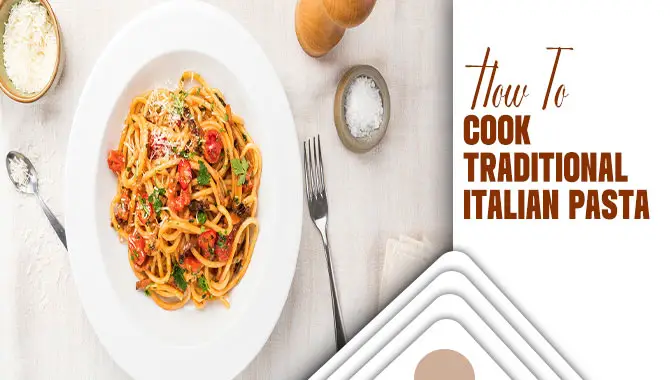
How To Cook Traditional Italian Pasta
Choosing the right type of pasta for your dish is essential to creating a delicious and satisfying meal. Knowing which pasta shape best suits your recipe can be overwhelming, with so many options available. However, understanding the characteristics of different pasta shapes can help guide your decision. Here are the full process of how to cook traditional Italian pasta.
1. Essential Tools And Ingredients For Italian Pasta
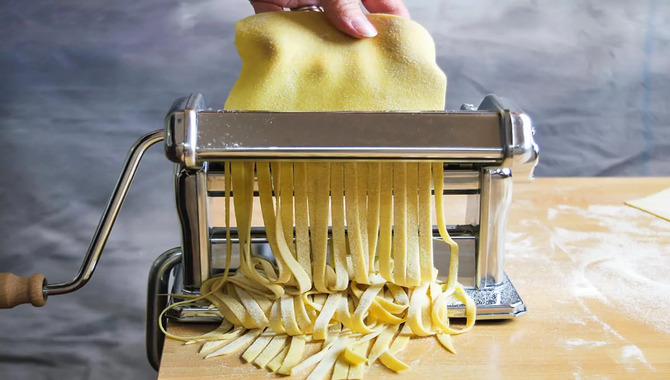
To prepare traditional Italian pasta, you’ll need essential tools and ingredients. Opt for high-quality pasta, whether dried durum wheat pasta or fresh pasta. Create a flavorful base by using authentic Italian ingredients like tomatoes, garlic, onions, and olive oil for the sauce.
Don’t forget to add Parmigiano-Reggiano or pecorino cheese for richness. Enhance the flavors with fresh herbs such as basil, parsley, and oregano. Cook the pasta in a large pot with a strainer insert, and use a pasta fork or tongs to lift and drain it.
2. Preparing The Ingredients
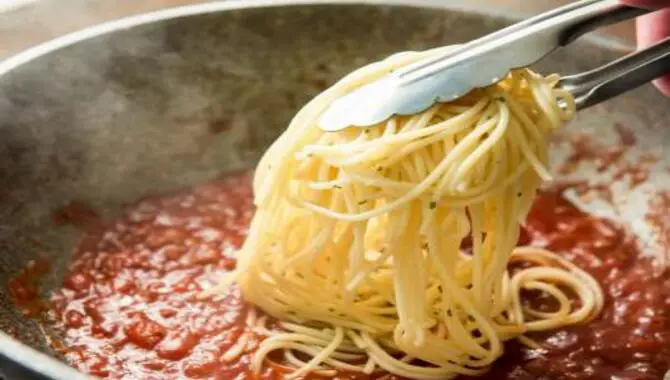
To prepare the ingredients for traditional Italian pasta, gather all the necessary components, including pasta, sauce, and any additional toppings or ingredients you plan to use. Fill a large pot with boiling water seasoned with salt for added flavor.
As you wait for the water to come to a boil, take the time to wash and chop fresh ingredients like vegetables or herbs you’ll incorporate. Once the water reaches a rolling boil, add the pasta and stir occasionally to prevent it from sticking. Cook the pasta until it reaches your desired level of doneness, such as al dente, following the package instructions. Meanwhile, heat your sauce in a separate pan or pot.
3. Boiling The Pasta
To prepare authentic Italian pasta, fill a large pot with water and bring it to a rolling boil. Sprinkle in salt, about 1 tablespoon per 4 quarts, to enhance the flavors. Gently add the pasta to the boiling water, ensuring it doesn’t stick together.
Cook the pasta per the packet instructions or until it reaches the traditional Italian level of doneness called “al dente.” Next, drain the pasta in a colander, reserving some cooking water for sauces. Rinse the pasta with warm water only if you plan to serve it cold, such as in a pasta salad.
4. Making The Sauce
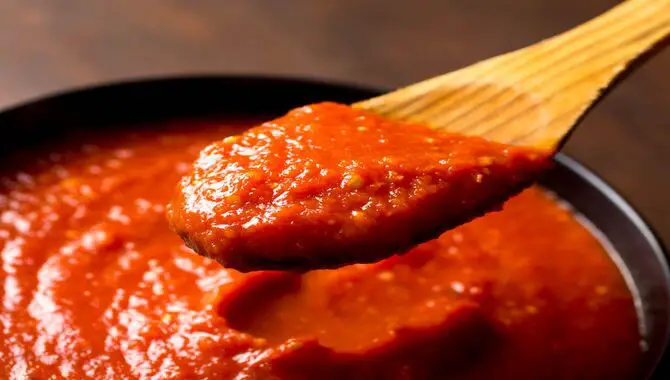
For an authentic Italian pasta experience, it’s essential to master the art of making the sauce. Selecting the perfect pasta to complement your sauce is crucial. While your pasta cooks to al dente perfection in salted boiling water, create a flavorful base for your sauce by sautéing minced garlic and aromatic ingredients like onions or herbs in olive oil.
Once softened, add your main ingredients, such as juicy tomatoes or savoury meat, and let their flavours meld together. Season the sauce with salt, pepper, and other desirable spices or seasonings for a delectable umami taste.
5. Adding Toppings
To elevate the authentic Italian experience of your traditional pasta dish, explore the realm of delicious toppings. High-quality ingredients like tomato sauce, pesto, olive oil and garlic, or cheese can enhance the flavor profile. Be sure to evenly distribute these mouthwatering additions over the perfectly cooked pasta for a balanced taste. Embrace your culinary creativity and experiment with many flavors and combinations to elevate your pasta dish.
6. Finishing Touches
Follow these steps for the perfect finishing touches on your traditional Italian pasta recipe. After cooking the pasta to your desired level of al dente, drain it using a colander. Remember to reserve a small amount of the boiling water, as it may be needed later to loosen up the spaghetti sauce.
Once drained, return the pasta to the large pot and add your chosen tomato sauce or other Italian pasta ingredients. Gently toss the spaghetti with the sauce, ensuring each noodle is evenly coated. To enhance the flavors of this classic Italian pasta dish, let the pasta rest for a minute or two off the stovetop before serving.
5 Italian Pasta Dishes We Adore
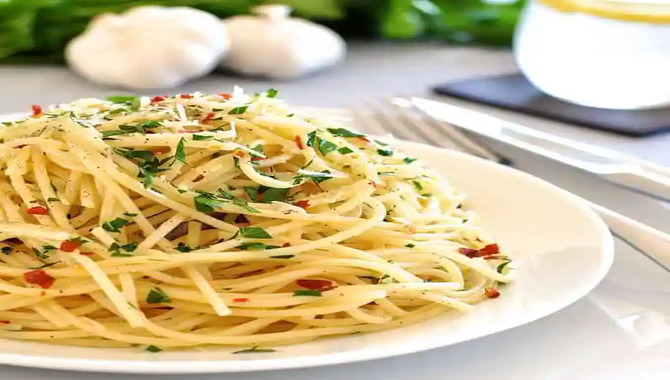
Explore the richness of Italian cuisine with these five mouthwatering pasta dishes that will surely delight your taste buds. Indulge in the classic flavors of Spaghetti Carbonara, made with eggs, pancetta, and Parmesan cheese.
Savour the creamy Fettuccine Alfredo from Rome, prepared with butter and Parmesan cheese. For a hearty meal, try the layered goodness of Lasagna Bolognese, consisting of pasta, meat sauce, and béchamel sauce.
Spice things up with Penne Arrabiata, a tomato-based sauce with garlic, chili flakes, and fresh basil. Finally, savour the delightful combination of cheese-filled Ravioli Caprese. Dive into the world of Italian pasta and elevate your culinary skills with these five irresistible dishes.
1. Cacio E Pepe
Cacio e Pepe is a classic Italian pasta recipe hailing from Rome. With just three simple ingredients – pasta, pecorino cheese, and black pepper – this dish embodies the essence of traditional Italian cooking. To prepare Cacio e Pepe, cook the pasta until it reaches al dente perfection.
Then, toss it in a skillet with melted butter or olive oil, grated pecorino cheese, and a generous sprinkle of freshly ground black pepper. The heat from the pasta melts the cheese, forming a luscious, creamy sauce that beautifully clings to each strand of pasta. Cacio e Pepe can be savoured as a main course or a delightful side dish alongside grilled meats or roasted vegetables.
2. Barilla Lasagna
Barilla Lasagna is a classic Italian pasta dish made with layers of lasagna noodles, tantalizing tomato sauce, gooey cheese, and your choice of succulent meat or wholesome vegetables. This iconic Italian favorite demands the use of premium-quality Barilla lasagna noodles and a homemade tomato sauce bursting with the flavors of fresh tomatoes, basil, and garlic.
The art of precisely layering these ingredients ensures that every bite delivers a perfect harmony of textures and tastes. Baking the lasagna in the oven intensifies its flavors, resulting in a mouthwatering dish with a rich, cheesy, and indulgently comforting profile. Elegantly present your Barilla Lasagna with a refreshing side salad and some warm, garlicky bread to complete this captivating Italian culinary experience.
3. Pasta Pomodoro
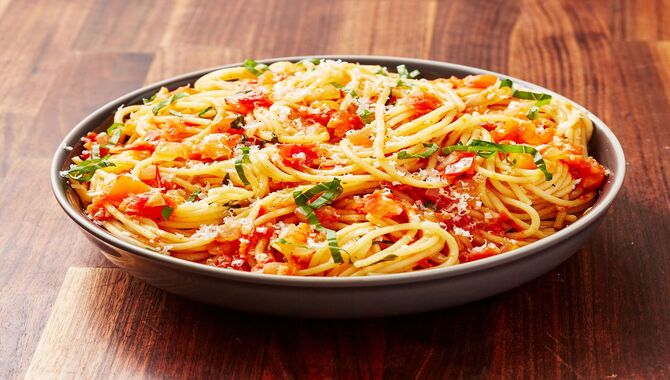
Pasta Pomodoro is a classic Italian dish that highlights the vibrant flavors of tomatoes, garlic, olive oil, and basil. This simple yet delightful recipe starts by sautéing garlic in olive oil until fragrant. Then, diced tomatoes are added and slowly simmered to create a luscious tomato sauce.
Cook the pasta separately until perfectly al dente, then toss it in the delightful tomato sauce. Finish off this authentic Italian pasta dish by adding fresh basil leaves and a sprinkle of grated Parmesan cheese.
4. Pasta Puttanesca
Pasta Puttanesca is a classic Italian dish that originated in Naples. This flavorful Italian dish is characterized by its bold combination of ingredients, including tomatoes, olives, capers, garlic, and anchovies. Cooked in olive oil and seasoned with red pepper flakes, the sauce adds a spicy kick to the dish.
It is traditionally served with spaghetti or other long pasta shapes. With its robust flavors and quick preparation time, Pasta Puttanesca is a perfect choice for a delicious and satisfying weeknight dinner or a spontaneous meal.
5. Manicotti
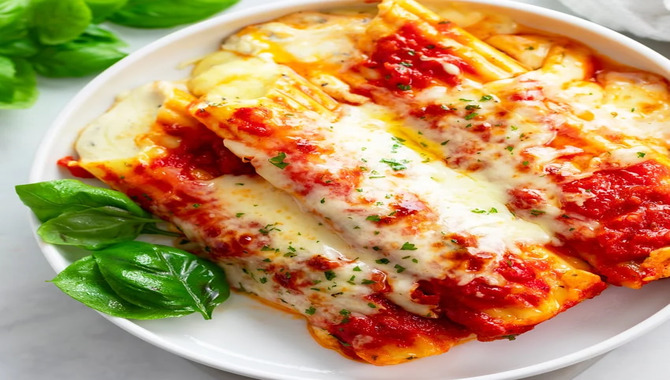
Manicotti, a beloved classic Italian pasta dish, stands out with its unique twist. This delightful creation showcases large pasta tubes stuffed with a delectable filling of ricotta cheese, spinach, and a medley of seasonings.
Baked in the oven with a rich tomato sauce and crowned with melted cheese, manicotti offers an indulgent and satisfying dining experience. Originating in Southern Italy, this dish has gained popularity in Italian-American cuisine, often taking centre stage as a main course during special occasions or family get-togethers.
Conclusion
cooking traditional Italian pasta is a delightful experience that requires the right tools and ingredients and following a step-by-step guide. By preparing the ingredients, boiling the pasta to perfection, making a delicious sauce, adding toppings, and putting on the finishing touches, you can create a mouthwatering Italian pasta dish that will impress your family and friends.
If you’re looking for inspiration, check out our list of 5 Italian pasta dishes we adore. From Cacio e Pepe to Manicotti, these recipes will transport you to Italy with every bite. Hope the above guideline on how to cook traditional Italian pasta, will be very helpful for you.
Frequently Asked Questions
What Is Traditional Pasta In Italy?
Traditional pasta in Italy is made from durum wheat semolina and water. It’s commonly cooked al dente and comes in shapes like spaghetti, penne, fettuccine, and lasagna. Popular dishes include carbonara, bolognese, pesto, and amatriciana.
Do Italians Bake Their Pasta?
Traditional Italian pasta is usually boiled, but baking pasta is more common in dishes like lasagna or baked ziti. However, there are exceptions like pasta al forno. The cooking method for pasta in Italy varies depending on the dish.
What Is The Most Authentic Italian Pasta Dish?
The most authentic Italian pasta dish cannot be determined as regional variations are plentiful. Popular options include spaghetti carbonara, lasagna, fettuccine Alfredo, and penne arrabbiata
Are You Ready For More Traditional Italian Pasta Dishes?
Absolutely! Indulge in the delightful world of traditional Italian pasta dishes. These authentic recipes will expand your culinary skills and satisfy your taste buds with their rich and flavorful combinations. Get ready to experience the true essence of Italian cuisine.
What Sauce With Homemade Pasta?
There is a wide range of sauce options to pair with homemade pasta. Traditional Italian sauces like marinara, carbonara, and Bolognese are popular choices. Cream-based sauces like Alfredo or vodka sauce also complement homemade pasta well.

I’m a writer and blogger who loves to talk about entertainment, culture, and relationships. I love to share my thoughts and insights on these topics, and I’m always looking for new ways to engage with my readers. I’m also a big fan of learning new things, so I’m always exploring new areas of interest.
